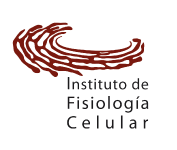Recovery from experimental Parkinsonism by Semaphorin-guided axonal growth of grafted dopamine neurons
Díaz-Martínez, N. E., Tamariz, E., Díaz, N. F., García-Peña, C. M., Varela-Echavarría, A., & Velasco, I. (2013). Recovery From Experimental Parkinsonism by Semaphorin-guided Axonal Growth of Grafted Dopamine Neurons. Molecular Therapy, 21(8), 1579–1591. doi:10.1038/mt.2013.78
Cell therapy in animal models of Parkinson's disease (PD) is effective after intrastriatal grafting of dopamine (DA) neurons, whereas intranigral transplantation of dopaminergic cells does not cause consistent behavioral recovery. One strategy to promote axonal growth of dopaminergic neurons from the substantia nigra (SN) to the striatum is degradation of inhibitory components such as chondroitin sulphate proteoglycans (CSPG). An alternative is the guidance of DA axons by chemotropic agents. Semaphorins 3A and 3C enhance axonal growth of embryonic stem (ES) cell-derived dopaminergic neurons in vitro, while Semaphorin 3C also attracts them. We asked whether intranigral transplantation of DA neurons, combined with either degradation of CSPG or with grafts of Semaphorin 3-expressing cells, towards the striatum, is effective in establishing a new nigrostriatal dopaminergic pathway in rats with unilateral depletion of DA neurons. We found depolarization-induced DA release in dorsal striatum, DA axonal projections from SN to striatum, and concomitant behavioral improvement in Semaphorin 3-treated animals. These effects were absent in animals that received intranigral transplants combined with Chondroitinase ABC treatment, although partial degradation of CSPG was observed. These results are evidence that Semaphorin 3-directed long-distance axonal growth of dopaminergic neurons, resulting in behavioral improvement, is possible in adult diseased brains.




